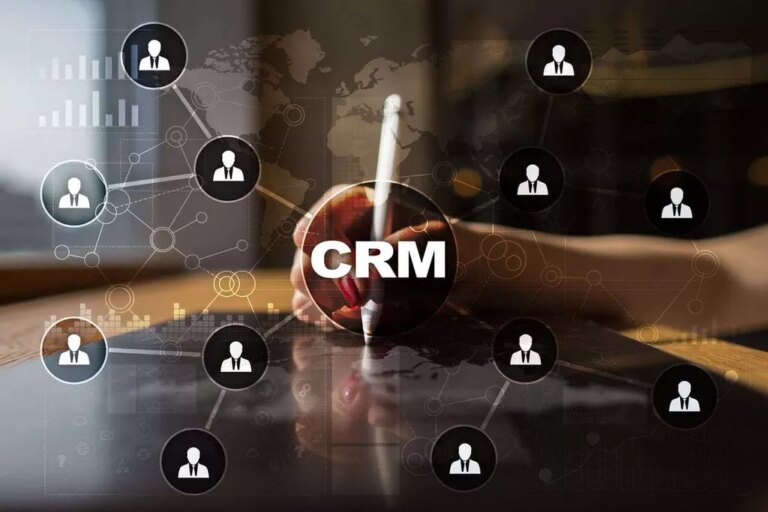What Is Enterprise IT Management EITM: Examples, Solutions, Benefits And More
It makes the routine work of suppliers, manufacturers, logistics managers and retailers easier. For all the parties, it helps in tracking and communicating with each other, establishing better procedures and delivering ready-made products to the customer more quickly. These programs automate operations in different types of organizations, governmental bodies, civil societies, and other groups.
Enterprise systems are sizable software packages that monitor and manage a company’s intricate business operations. These systems serve as central command centers to automate the business and facilitate reporting and decision-making. To fill this hole, Southwest began experimenting with the Internet of Things (IoT). The airline’s earliest foray was part of a quest to improve aircraft turn time—the time needed to deplane passengers, prepare the plane for departure, and load passengers for the next flight.
Machine learning applications for enterprises
Instead, enterprises need to develop a security architecture that responds appropriately to threats when and where they happen. Automated capabilities that detect, assess, and respond immediately are a focus for most organizations. The Chief Enterprise Architect (CEA) focuses on business modeling, processes, and integration. The CEA translates the business vision into effective enterprise change. The CEA works on creating technology and business process changes within the boundary of the business.
Figure 2 reflects how standardized professional knowledge is used as a basis to provide secure, interoperable, and high-quality information technology to the enterprise. Enterprise IT, as used in this Guide, refers to EIT services provided to (and maintained by) the enterprise by an EIT department. Deep learning is a subfield of ML that deals specifically with neural networks containing multiple levels — i.e., deep neural networks. Deep learning models can automatically learn and extract hierarchical features from data, making them effective in tasks like image and speech recognition. Moreover, organizations may find that the business processes of these systems are not able to support the way that the organization’s business processes work. For implementing ERP systems, organizations need to identify the business processes to be automated and then map those processes to the processes provided by ERP systems.
Solution Architect (f/m/x) – Corporate Bank Technology – Commercial Banking
Enterprise technology is any type of software, hardware, or system that is part of a large organization with more than 100 employees. Product management software, customer relationship management systems, and collaboration tools are good examples. Used well, enterprise technology can streamline workflows — making it easier for organizations to achieve their goals. It is these accelerating information technologies that can instigate major innovations in enterprises, ranging from energy and the environment, to health systems and telecommunications. With this strong focus on information technology, the planet seems to getting smaller, flatter, and smarter every day. New businesses and business models have come into existence and old ones are dying at a tremendous speed.

This involves reporting and tracking problems that pass through the help desk, as well as managing resolutions to those problems. This ensures that an organization adheres to industry and government regulations as specified in its compliance framework. For example, marketing staff can use the information from the sales about the most frequent client’s needs, and the sales specialists can benefit from the marketers’ database. Learn about Deloitte’s offerings, people, and culture as a global provider of audit, assurance, consulting, financial advisory, risk advisory, tax, and related services. Deloitte Insights and our research centers deliver proprietary research designed to help organizations turn their aspirations into action.
Raising the stakes for uptime, redundancy, and security
IT systems must operate at a certain service level for the business to succeed. Systems management ensures that each component is performing as expected so that the business can operate as expected. Good systems management simplifies IT service delivery, allowing employees and workgroups to do their jobs efficiently. It also helps businesses be proactive, spending less time fixing problems and more time planning for the future and making improvements. The supply chain management (SCM) system is software that helps streamline all these processes.

“As we look to the future, it’s not sustainable for every image to be reviewed by a human inspector,” says Kaushik. Deloitte Insights and our research centers deliver proprietary research designed to help organizations turn their aspirations into action. Identify security threats and vulnerabilities to protect the organization’s sensitive data. Collect and analyze data to measure business performance and identify areas for growth. Skills Framework for the Information Age (SFIA) is a model for describing and managing nearly 100 competencies for EIT professionals for the 21st century, and is intended to help match the skills of the workforce to the needs of the business.
Which server type is best for your business?
Resiliency is critical; the highest levels of system uptime, reliability, and security likely will be required. Systems management is the administration of the information technology (IT) systems in an enterprise network or data center. An effective systems management plan facilitates the delivery of IT as a service and allows an organization’s employees to respond quickly to changing business requirements and system activity. In a hybrid IT environment, this involves overseeing the design and day-to-day operations of the data center. It also includes oversight of the integration of third-party cloud services. Pinning down a definition for enterprise IT is complicated by the fact that what is considered enterprise IT may vary depending on the institution.
- When her team is asked to solve a new problem, she evaluates what skills, data, or capabilities are available that would enable her team to create something better than commercial offerings.
- It delivers a standard set of collaboration tools and workflow solutions that reduce interdepartmental silos.
- Shadow IT is considered by many as an important source for innovation, and such systems can turn out to be important prototypes for future approved EIT solutions.
- This is the oversight of all stages in the life of a software application, from planning to retirement.
- Training machine learning algorithms often involves large amounts of good quality data to produce accurate results.
- To do its job right, EIT needs to have visibility into the enterprise’s understanding of all its business factors.
For optimization of all the processes, they enjoy great benefits from using CRM. Organizations use CRM for gathering details of their clientele, decrease the time employees spend on routine tasks, grow their businesses. Maryia is an avid technology enthusiast who constantly follows the developments NLU models in the industry and enjoys shedding light on the hottest IT topics. She combines her own in-depth research with the direct input from seasoned engineers to create insightful and empowering content. Every businessperson understands the agony of abruptly losing a potential client.
How SELinux improves Red Hat Enterprise Linux security
The transition from on-premise to cloud causes IT to shift focus and concentrate on contract management, vendor relations, collaborations with functional and business units, and data integration issues. Businesses implement Enterprise Resource Planning (ERP) to integrate procurement, finance, accounting, marketing, and human resources processes. In ERP, these modules are interconnected with the ability to distribute information. For example, it helps promote products via different communication channels, provides marketing analytics, data generation and reporting. For any organization with a complex structure, be it a large corporation, educational institution or government department, proper software is essential.

Sometimes you neglect to close a deal, cross-sell to your existing customers, upsell to your customers, or advertise those new products. You may access an IT staff with the necessary credentials, training, expertise, and certifications by working with an enterprise managed IT service. When the need comes, these professionals will be able to respond to your inquiries and offer solutions. Enterprise IT management often entails designing and putting into practice methods to achieve operational efficiencies, whether managed internally or outsourced to an external specialist.
Chief Futurist Deloitte Consulting LLP
For example, IBM’s Business Intelligence platform (Cognos), integrates with a predictive analytics platform (SPSS) and can obtain records from its database packages (Infosphere, DB2). Enterprise software, also known as enterprise application software (EAS), is computer software used to satisfy the needs of an organization rather than individual users. Such organizations include businesses, schools, interest-based user groups, clubs, charities, and governments. Enterprise software is an integral part of a computer-based information system.
Some examples of data that should be stored include customer order history, when and where they made those orders, and how long it took for those orders to be processed. A company’s ability to quickly retrieve this type of information in order to answer customers’ questions can go a long way toward improving customer satisfaction. With the emergence of customer experience as a key priority, CIOs have put more emphasis on deploying technologies that enable their organizations to identify, serve and retain their customers more effectively.
What are some use cases of enterprise software solutions?
Angela Marano, managing director of business transformation at Southwest, says it’s been important for her team to assess areas where it can add unique value versus where it makes sense to partner with a vendor. When her team is asked to solve a new problem, she evaluates what skills, data, or capabilities are available that would enable her team to create something better than commercial offerings. Sometimes the answer is yes, while other times it’s more advantageous to use existing best-in-class solutions. As physical assets evolve to be business-critical and are located outside of traditional enterprise boundaries, new skill sets will likely be needed to manage, maintain, and monitor them.
